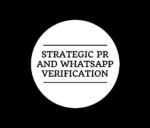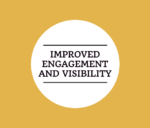Understanding Cold Lead Generation
Cold lead generation refers to reaching out to individuals or businesses who haven’t previously shown interest in your product or service. These potential customers are not yet familiar with your brand or the problem-solving benefits of your offerings.
Did you know that only 2% of cold calls result in a meeting?
While this statistic may sound discouraging, it underscores the importance of mastering cold lead generation techniques.
In a world where 79% of marketing leads never convert into sales without proper nurturing, understanding how to effectively reach and engage cold leads is crucial for business growth.
Lead generation isn’t just a strategy—it’s the lifeblood of thriving businesses.
While cold lead generation sparks debate over its effectiveness, with the right approach, it can be a powerful tool for filling your pipeline and driving conversions.
What Is Cold Lead Generation?

Lead generation is the cornerstone of growing any business. It’s the art and science of attracting and engaging potential customers, guiding them toward making a purchase.
This process varies to fit different stages of a customer’s journey, making it essential for both brand awareness and sales.
Examples of Cold Leads:
- Sending introductory emails to industry-relevant companies that haven’t interacted with you.
- Reaching out via LinkedIn to professionals in key job roles.
- Calling numbers from a purchased contact list.
For further details, you can read more about best practices for cold emailing.
The Challenge with Cold Outreach
Many marketers worry about appearing intrusive or pushy.
Without the right approach, Cold lead generation outreach can indeed come off that way, damaging your reputation and deterring potential clients.
However, when done thoughtfully and with empathy, cold lead generation can yield impressive results.
Best Practices for Approaching Cold Leads
- Empathize and Personalize: The era of one-size-fits-all messaging is over. Customized outreach shows you understand your recipient’s unique situation, creating a foundation of trust. Personalization can increase your response rate and make your cold outreach more engaging.
- Communicate a Clear Value Proposition: Be concise and direct. Let them know why your product or service matters and how it can address their specific pain points. Highlighting tangible benefits, such as time savings or increased productivity, makes your message resonate.
- Establish Trust and Credibility: Providing social proof strengthens your claims. Include testimonials, success stories, and industry accolades to establish trust. Building credibility from the start helps turn your cold outreach into a warm interaction.
- Include a Strong Call to Action: Make your communication easy to follow with a clear, actionable CTA. Whether it’s scheduling a call or visiting a resource page, ensure that the next step is simple and direct.
For an example of how social proof works, explore these impactful case studies.
Check out more on how to craft compelling CTAs.
Is Lead Generation the Same as BPO?
No. Business Process Outsourcing (BPO) refers to delegating business activities to external providers.
While cold lead generation can be outsourced to BPO firms, it isn’t inherently a BPO activity. Companies can manage it internally or through specialized agencies.
Types of Lead Generation Strategies
Lead generation strategies can be broadly categorized into two main types:
1. Inbound Lead Generation
This Cold lead generation strategy focuses on attracting potential customers through content that provides value and addresses their interests:
- Blog Posts: Share insightful content that establishes thought leadership.
- SEO: Optimize your content to be found by prospects during their search.
- Webinars: Host informative sessions that engage and educate your audience.
- eBooks and Guides: Offer in-depth resources to inform and attract leads.
For more on how to create high-quality content, visit Content Marketing Institute.
2. Outbound Lead Generation
Involves proactively reaching out to potential customers:
- Cold Calling: Engage directly with prospects but ensure a value-driven conversation.
- Email Campaigns to Targeted Lists: Use well-crafted emails while adhering to data privacy regulations.
- Paid Advertising: Run targeted online ads to reach specific demographics.
Learn more about outbound strategies at Sales Hacker.
Hot, Warm, and Cold Leads Explained
Understanding lead temperature helps you tailor your approach for optimal results:
- Hot Leads: Ready to buy and highly engaged. They might have requested a demo or shown direct interest.
- Warm Leads: Interested but need further nurturing. This includes those who have subscribed to newsletters or downloaded resources.
- Cold Leads: Match your target audience criteria but have not yet engaged with your brand.
Explore deeper insights on lead types at HubSpot’s Guide to Lead Generation.
Cold Leads vs. Prospects
While similar, cold leads and prospects have key differences:
- Awareness Level: Cold leads may not know your business, whereas prospects have encountered your brand through content or social media.
- Engagement Level: Cold leads have yet to interact with your brand, while prospects might have engaged with your content or website.
Effective Tactics for Cold Outreach
Approach Cold lead generation as a journey from awareness to engagement:
- Add Value First: Share helpful content to show you’re invested in helping them succeed, not just selling to them.
- Follow Up Consistently: 80% of sales require five follow-ups after initial contact. Persistence with value-driven follow-ups is key.
- Email Nurturing: Use a series of personalized emails that build trust and move leads through the funnel.
For nurturing strategies, check out Campaign Monitor’s guide to email marketing.
Turning Cold Leads into Warm Prospects
To move leads from cold to warm:
- Increase Awareness: Utilize content marketing to introduce your brand and its value.
- Engage with Meaningful Content: Address pain points and showcase your expertise through valuable resources.
- Build Trust: Use testimonials, case studies, and transparent communication.
The Importance of Relationship Building
Cold lead generation is more than just reaching out—it’s about nurturing relationships:
- Permission Marketing: Build trust and offer value before making an ask.
- Consistent Outreach: Utilize email nurture sequences and social media interactions to stay visible and relevant.
Conclusion
Cold lead generation, when done right, can be the key to filling your pipeline with potential customers. By understanding their needs, personalizing your approach, and offering value, you can guide cold leads from awareness to trust and, ultimately, to conversion.
Start refining your cold outreach strategy today.
With these practices, you’ll see improved response rates and long-term growth. And if you need expert guidance to enhance your cold lead generation process, reach out—success is just one step away.





